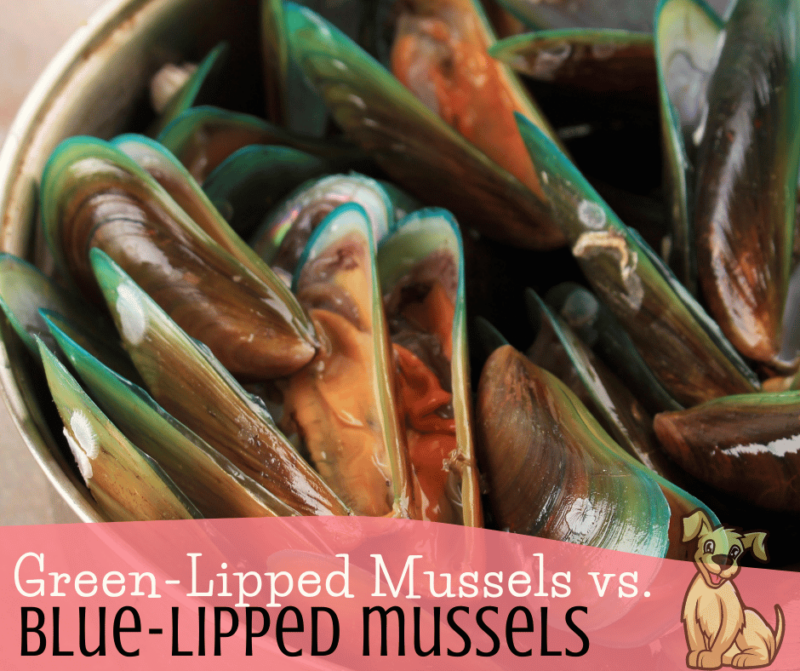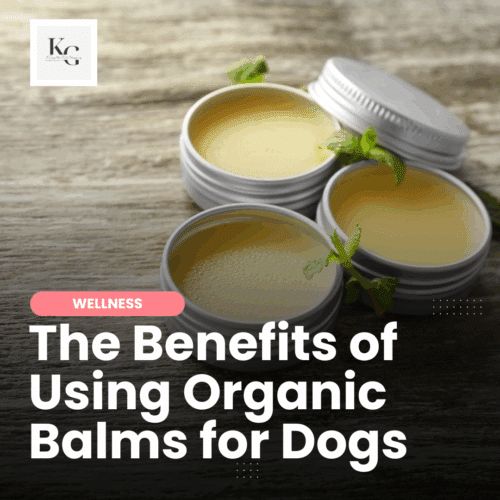Keep the Tail Wagging is supported by pet parents. I occasionally earn a commission (at no additional cost to you) when you click through an affiliate link to one of my favorite products. Thank you for your support. Read More
Years ago, I was introduced to green-lipped mussel powder as a natural supplement to reduce inflammation. Today, mussels are a regular part of my diet, and I alternate between green and blue-lipped mussels. But what's the difference? And which one is more beneficial for my dogs>
Green-lipped mussels, also known as Perna canaliculus, are native to New Zealand and renowned for their potent anti-inflammatory properties. These mussels contain a unique combination of omega-3 fatty acids, glucosamine, and chondroitin sulfate, making them highly beneficial for supporting joint health in dogs.
On the other hand, blue-lipped mussels, scientifically known as Mytilus edulis, are found in various regions worldwide, including Europe and North America. While blue-lipped mussels also offer some omega-3 fatty acids, they lack the specific compounds present in green-lipped mussels that have been proven to alleviate joint pain and inflammation in dogs.
Green-Lipped Mussels for Dogs
Green-lipped mussels offer many health benefits. Packed with essential nutrients, these mollusks promote joint health, improve skin and coat condition, and boost overall immune function in dogs. The high levels of omega-3 fatty acids found in green-lipped mussels support healthy brain development, reduce inflammation, and ease joint pain in aging or active dogs. And my dogs love them.
Nutrients in Green-Lipped Mussels for Dogs
Besides the Omega-3 fatty acids, green-lipped mussels are a rich source of vitamins and minerals, including vitamins A, B12, and E, as well as calcium, iron, and zinc, contributing to a dog's overall vitality.
Sourcing Green-Lipped Mussels for Dogs
I have five sources for green-lipped mussels:
- local raw food co-op – whole mussels (cooked/frozen), GLM powder, freeze-dried mussels
- Real Dog Box – GLM powder, freeze-dried mussels
- restaurant supply store – whole mussels (cooked/frozen)
- Asian market – whole mussels (cooked/frozen)
- local independent pet store – freeze-dried mussels
I've found that the cooked/frozen mussels (no sauce) are the most affordable. The powder can be difficult to source. Many pet brands have it as an ingredient, but I've only found one that offers plain GLM powder. Four Leaf Rover has a hip and joint supplement that is 60% GLM powder mixed with other great ingredients like eggshell membrane and curcumin.
Green-lipped mussel treats are expensive if you're looking for mussels to support joint health and reduce inflammation; the powder or fresh mussels are a better investment.
Blue-Lipped Mussels for Dogs
Blue-lipped mussels, scientifically known as Mytilus edulis, are packed with essential nutrients supporting a dog's overall health and well-being. Rich in protein, blue-lipped mussels provide the necessary building blocks for strong muscles and optimal body function. Although blue-lipped mussels are a natural source of omega-3 fatty acids, the levels are less than what's found in green-lipped mussels.
Nutrients in Blue-Lipped Mussels for Dogs
Along with the Omega-3 fatty acids, blue-lipped mussels also contain vitamins and minerals such as vitamin B12, selenium, and zinc, all of which contribute to a strong immune system and enhanced vitality.
Sourcing Blue-Lipped Mussels for Dogs
I can only find blue-lipped mussels at a local restaurant supply store; they are cooked and frozen.
Which is Healthier? Green or Blue-Lipped Mussels
My initial research highlighted fewer differences between green and blue-lipped mussels beyond the taste; blue mussels are slightly sweeter than green-lipped mussels. But the taste isn't the chief concern for dog lovers.
Green-lipped mussels are known for their health benefits, particularly in supporting joint health due to their high content of omega-3 fatty acids, glucosamine, and chondroitin. Blue-lipped mussels, on the other hand, are not a commonly known variety of mussels and do not have established health benefits like green-lipped mussels. Therefore, when it comes to joint health support, green-lipped mussels are typically preferred due to their established reputation and research-backed benefits.
When I compared green and blue-lipped mussels in the Animal Diet Formulator software, Three things stood out:
- SODIUM: blue-lipped mussels are approximately 35% lower in sodium.
- VITAMIN A: green-lipped mussels are approximately 45% higher in Vitamin A.
- PURINES: green-lipped mussels contain purines, which is important for breeds that require a low purine diet.
Green-lipped mussels are available in whole and as powder. I've only found blue-lipped mussels as a whole mussels, not a powder (where I live).
How I Feed Mussels to My Dogs
I add mussels to my dogs' meals as a side dish. Blue-lipped mussels are 1/2 to 1/3 of the size of green-lipped mussels. I feed 8-9 blue mussels or three green-lipped mussels. I alternate mussels with sardines, mackerel, salmon, and salmon oil. I don't feed blue-lipped mussels very often.
I never add raw mussels during meal prep because blue-lipped mussels contain thiaminase, and regularly mixing raw mussels with another protein will decrease the B Vitamins, potentially leading to a vitamin B deficiency. Although my research specifically mentioned blue-lipped mussels, I couldn't rule out green-lipped mussels.
The mussels I order for my dogs are cooked. They can be added during my meal prep, but I prefer adding mussels to my dogs' meals for a few days once a month.






